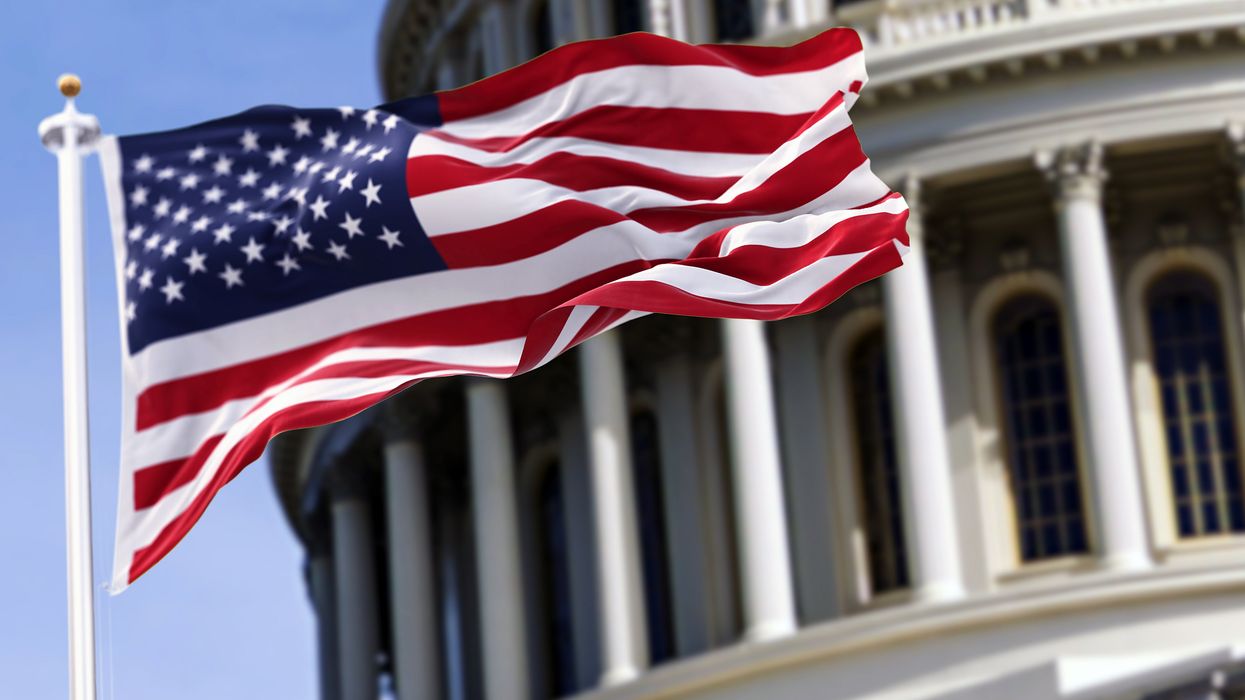Radwell is the author of “American Schism: How the Two Enlightenments Hold the Secret to Healing our Nation ” and serves on the Business Council at Business for America. This is the 10th entry in a 10-part series on the American schism in 2024.
As citizens of all stripes struggle to make sense of the rancorous polarization that defines our nation today, a reemerging debate centers on the very characterization of the American ideal itself: Do we strive to be a democracy or a republic?
The term republic comes from the Latin “public good.” Democracy, on the other hand, is rule according to the will of the majority. Many consider the distinction merely one of semantics, since so often the resulting debate is counterproductive, seldom yielding valuable insights. Moreover, the influence of monied interests, both mega companies and multibillionaires, reduces our contemporary reality closer to an oligopoly than to either a democracy or a republic.
Still, as we contemplate needed structural reforms, a target model to aim for seems indispensable (much as it was for our founders back in the late 18th century).
As Eric Bronner, the founder of Veterans for All Voters, wrote recently: “We can stop arguing over whether our country is a ‘democracy’ or a ‘Republic -- We are both! … Alright. That's settled. Let's move on.” Bronner is correct — we are indeed both. We are a democratic republic. But if, as he suggests, we leave the discussion at that, we miss an ripe opportunity for a pivotal teaching moment that just might help heal our wounds. Ironically, in today’s frenzied media environment, it is precisely a healthier understanding of our founding aspirations that is lacking and required lest we fail to bridge the American schism today.
In previous articles of this series, I have referred to the original American schism (as I write about in my book) as the split in the late 18th century among two factions of our founders in rigorous disagreement about the character of the new nation they were shaping. On one side of the debate were Thomas Jefferson, Benjamin Franklin and Thomas Paine, who championed a decentralized egalitarian democracy (albeit, for white men) with the locus of power scattered to the individual communities across the colonies.
The opposing camp, led by Alexander Hamilton and John Adams along with many other colonial elites, eschewed democracy. Dreading the caprices of a system where citizens would be prey to the clever rhetoric of malevolent, power-thirsty orators, they envisaged a greater centralized government with substantial power vested in a ruling class.
These two visions vying for prominence had roots in the social contract writings of the Enlightenment philosophers from that era. Hamilton’s camp, eventually called the Federalists, postulated the “aristocratic republic” greatly influenced by Montesquieu, Locke and others that grounded the British system subsequent to the 1688 Glorious Revolution. In this model, governance on behalf of the common good was the moral responsibility of those well-educated and up to the task (which for the mastermind Hamilton was a high bar indeed).
Jefferson’s camp, the Democratic-Republicans, was more profoundly influenced by a group of French philosophes such as Diderot, d’Holbach and Condorcet whose writings laid the foundation for the Déclaration des Droits de l’Homme et du Citoyen of 1789 during the early phases of the French Revolution (before the disastrous Reign of Terror).
The compromise between these two prototypes that became our Constitution was a mixed model combining elements of both. In fact, the collected Federalist Papers, which discuss this model at some depth and from different perspectives, is considered a brilliant political treatise precisely because it delineates how to thread the proverbial needle: James Madison and Hamilton (and John Jay to a much lesser degree) show us how both models can be combined into one blueprint in which the whole is greater than the sum of its parts.
But it is precisely the balancing of these two opposing models wherein lies the magic of the American experiment as well as the basis for its endurance. The United States was explicitly designed by our founders as a mixed model in the pursuit for an equilibrium between two natural and unavoidable tensions — specifically, between the elite forces of the ruling class and the populist forces that must hold them accountable.
As the book claims, much of our history can be depicted as a pendulum-like oscillation between these two models, fluctuating upsurges in the power of the elites confronted by a populist demands for rectifications when the leaders fail to provide solutions for everyday citizens. The first populist wave occurred during the Jacksonian period as a reaction in part to the failures of the elite Federalists. As post-Civil War America emerged as an industrial machine, the ostensibly limitless influence of the banks, oil companies and railroads were challenged from the bottom up via a populist wave called the Farmers Alliance in the late 19th century. This empowering movement, which educated and unified millions of everyday Americans. ultimately led to the Progressive Era, which turned the page on the Gilded Age.
In sum, the polarization we see today is derivative of the original schism (as is the case with many other divisive periods of our history), and requires a deeper examination and understanding by our citizenry before we can contemplate an overhaul. The underlying disparities are not semantic — anything but. They are fundamental to comprehending our current crises and to chartering the road we must travel if our country is to endure.
The establishment’s pursuit of neoliberalism over the past 40 years has repeatedly ignored the pain of so many outside their ranks. The coastal elites’ sanctimonious detachment from the social conditions of “flyover country” is a principal feature underlying our current governance predicaments. As Oren Cass wrote in The New York Times:
“In a democratic republic such as the United States, where the people elect leaders to govern on their behalf, the ballot box is the primary check on an unresponsive, incompetent or corrupt ruling class. … Anyone worried about the future of American democracy should be concerned foremost with the elites’ bizarre belief that the road is theirs. This is the root cause of present instability and poses the most serious long-term threat to the Republic.”
It is only if and when the present ruling classes come to terms with the crushing indictment of their leadership by the voting classes that they can be held accountable and superseded by newly elected leaders. At the same time, working class Americans who are entitled to more responsible stewardship must also appreciate that the institutions sustaining our democratic republic are what accounts for its success and durability, and by tearing them down we risk shredding our social contract foundations beyond repair.
In today’s schism the tension between elite and populist forces manifests as a volatile mix of acrimony and self-righteousness from both sides. Only if we understand and account for the tension will we be able to transcend this unremitting battle and relieve our national pain. We need an honest debate about the advantages of both sides of our model and, as we have in the past, we must make necessary and overdue corrections that respect both (most likely requiring amendments to the Constitution). Having our cake and eating it too in this context means reaping the structural benefits of a meritocratic republic where the highly competent can lead, whilst also using the democratic elements of the voting box to throw the bastards out when they fail to be held to account for the common good.
By glossing over the stress created by design in our system, we fail to grasp that what divides us today is in fact a beneficial aspect of our republic (despite it not always feeling so sanguine). Without a frank understanding and accounting as such, the schism itself will never be healed. We must foster a deeper and broader appreciation for why our democratic republic, with all its historical chapters of tragic injustice, and with all its present day flaws and warts, is still the best example of self-government in our planet’s recorded history.
History can act as a salve for our wounds, if only we would apply it.




















